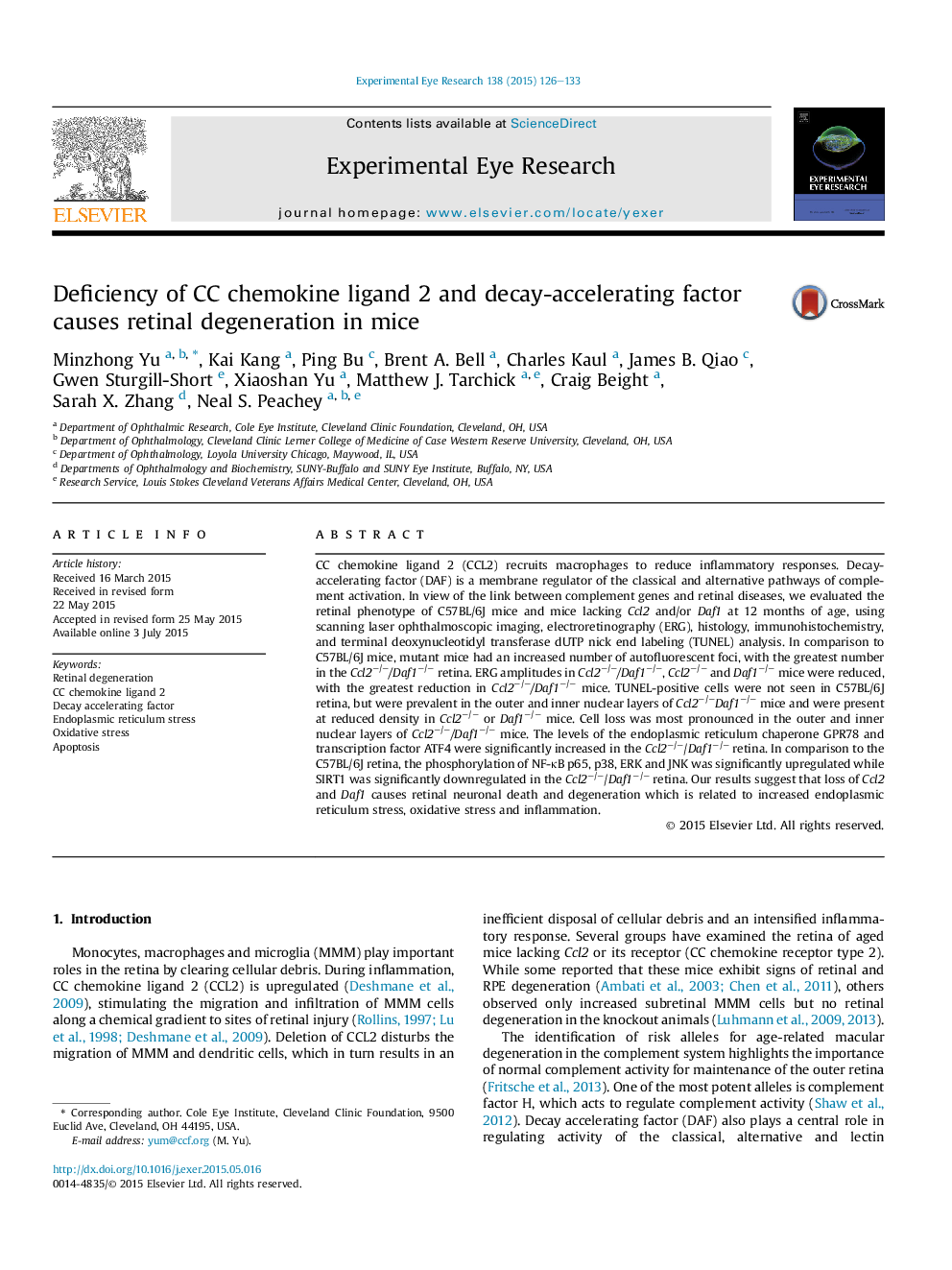| کد مقاله | کد نشریه | سال انتشار | مقاله انگلیسی | نسخه تمام متن |
|---|---|---|---|---|
| 6196573 | 1602584 | 2015 | 8 صفحه PDF | دانلود رایگان |

- Retinas of mice lacking CCL2 and/or DAF1 have higher numbers of autofluorescent foci and apoptotic cells in the ONL and INL.
- Mice lacking CCL2 and DAF1 have reduced amplitude ERGs and thinned ONL and INL.
- Retinas of mice lacking CCL2 and DAF1 have elevated levels of GRP78, ATF4, p-ERK, p-JNK, p-p38 and p-NF-κB and decreased SIRT1.
CC chemokine ligand 2 (CCL2) recruits macrophages to reduce inflammatory responses. Decay-accelerating factor (DAF) is a membrane regulator of the classical and alternative pathways of complement activation. In view of the link between complement genes and retinal diseases, we evaluated the retinal phenotype of C57BL/6J mice and mice lacking Ccl2 and/or Daf1 at 12 months of age, using scanning laser ophthalmoscopic imaging, electroretinography (ERG), histology, immunohistochemistry, and terminal deoxynucleotidyl transferase dUTP nick end labeling (TUNEL) analysis. In comparison to C57BL/6J mice, mutant mice had an increased number of autofluorescent foci, with the greatest number in the Ccl2â/â/Daf1â/â retina. ERG amplitudes in Ccl2â/â/Daf1â/â, Ccl2â/â and Daf1â/â mice were reduced, with the greatest reduction in Ccl2â/â/Daf1â/â mice. TUNEL-positive cells were not seen in C57BL/6J retina, but were prevalent in the outer and inner nuclear layers of Ccl2â/âDaf1â/â mice and were present at reduced density in Ccl2â/â or Daf1â/â mice. Cell loss was most pronounced in the outer and inner nuclear layers of Ccl2â/â/Daf1â/â mice. The levels of the endoplasmic reticulum chaperone GPR78 and transcription factor ATF4 were significantly increased in the Ccl2â/â/Daf1â/â retina. In comparison to the C57BL/6J retina, the phosphorylation of NF-κB p65, p38, ERK and JNK was significantly upregulated while SIRT1 was significantly downregulated in the Ccl2â/â/Daf1â/â retina. Our results suggest that loss of Ccl2 and Daf1 causes retinal neuronal death and degeneration which is related to increased endoplasmic reticulum stress, oxidative stress and inflammation.
Journal: Experimental Eye Research - Volume 138, September 2015, Pages 126-133